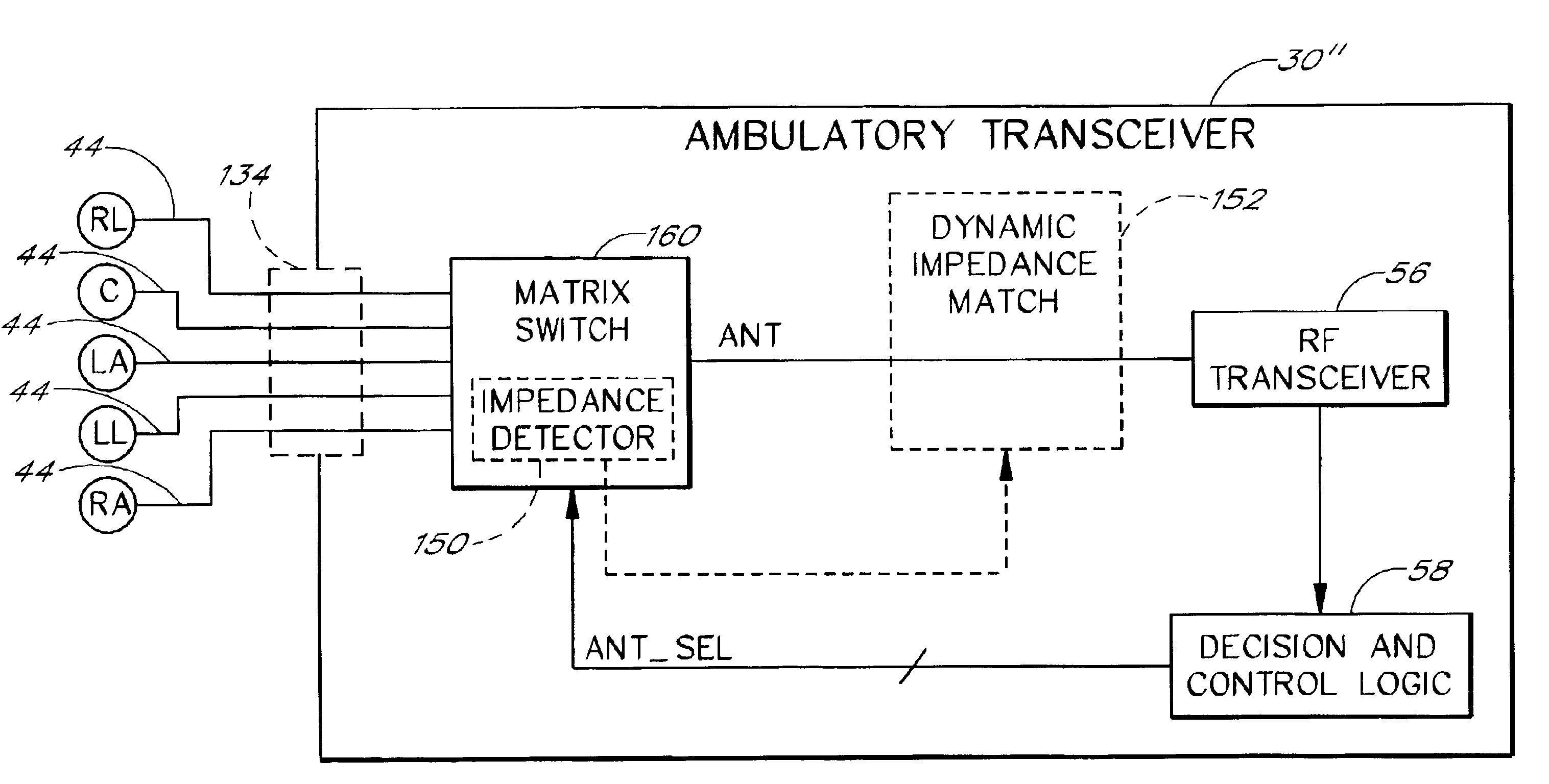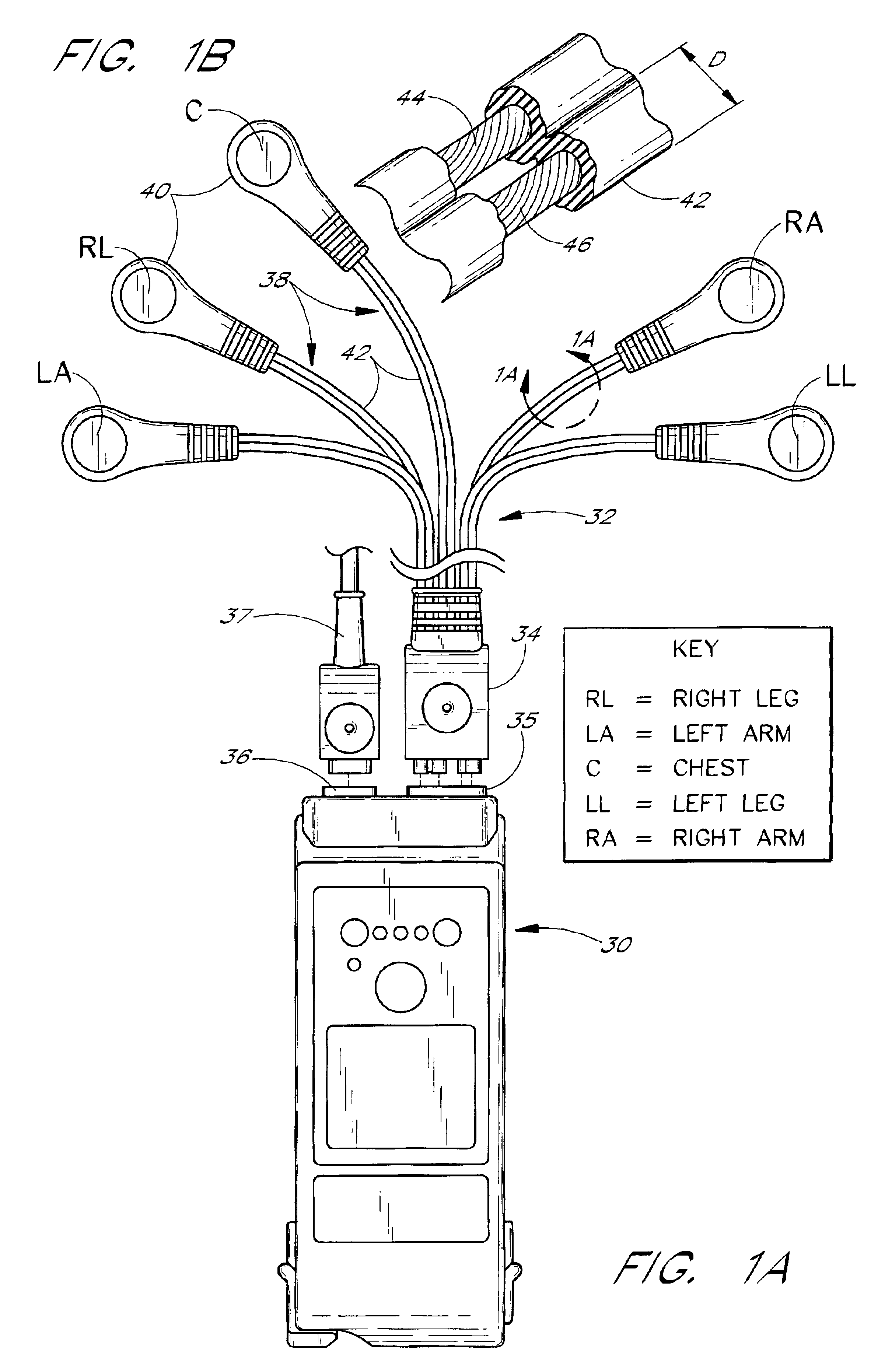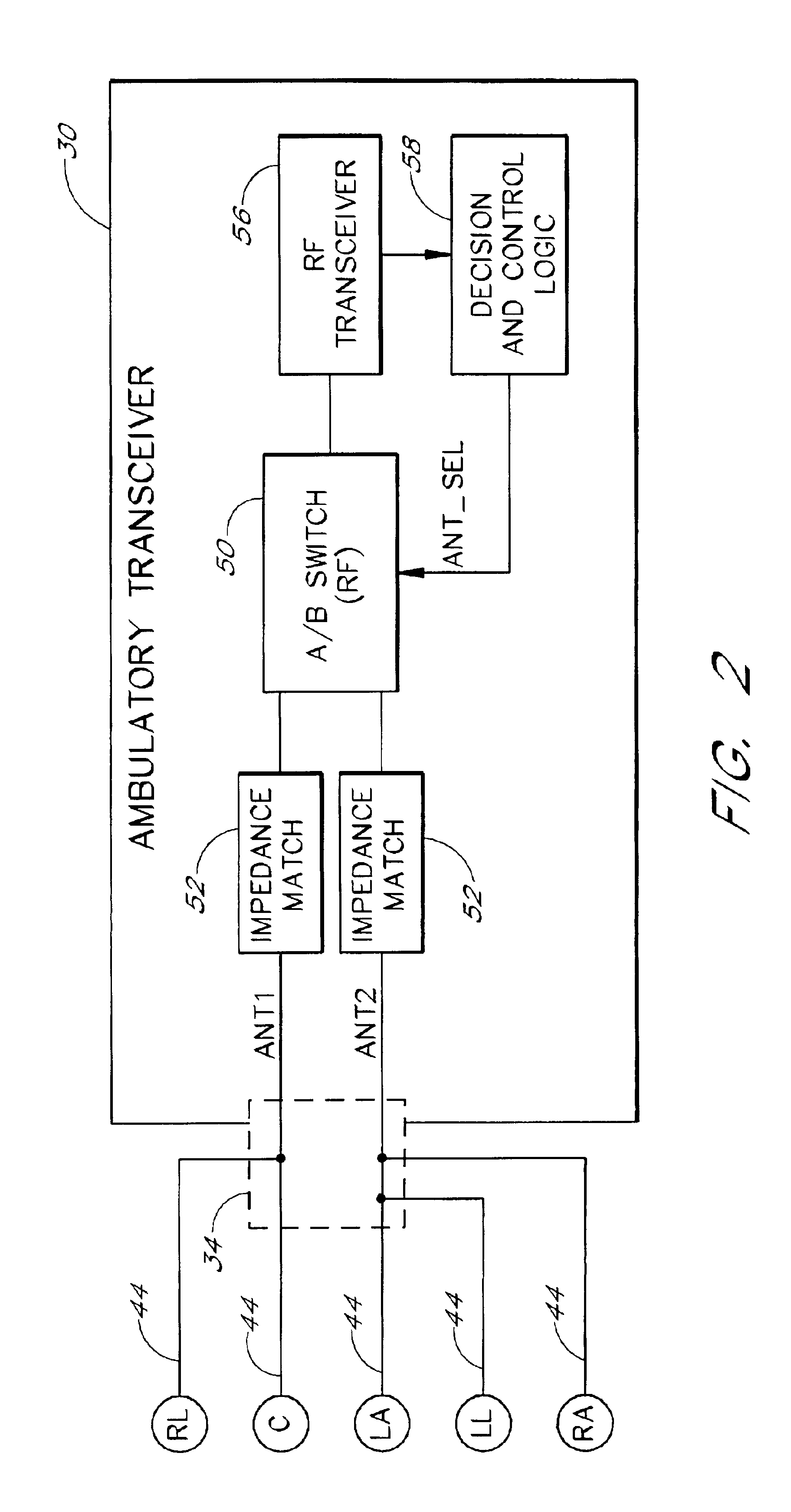Patient telemetry device with auto-compensation for impedance changes in leadset antenna
a patient telemetry and leadset technology, applied in the field of remote patient monitoring telemetry systems, can solve the problems of inconvenient patient treatment, lack of durability, and stiffness of coaxial ecg lead wires, and achieve the effects of low capacitance tvs, low cost, and effective beam steering
- Summary
- Abstract
- Description
- Claims
- Application Information
AI Technical Summary
Benefits of technology
Problems solved by technology
Method used
Image
Examples
Embodiment Construction
[0029]An ambulatory transceiver system that embodies some of the inventive features mentioned above will now be described with reference to FIGS. 1-6. Additional designs incorporating other inventive features will then be described with reference to FIGS. 7-9. As will be apparent, many of the disclosed features can be used or practiced independently of others, and without many of the implementation-specific details set forth herein. In addition, many of the inventive features that are described separately can be appropriately combined within an ambulatory or other telemetry device.
[0030]Although the specific embodiments illustrated in the drawings involve a transceiver unit that attaches to an ECG lead set, many of the disclosed features may be embodied within or used with other types of devices. Examples of other devices include patient telemetry devices that are merely RF transmitters and not RF receivers (referred to herein as “unidirectional transmitters”), and devices that sens...
PUM
 Login to View More
Login to View More Abstract
Description
Claims
Application Information
 Login to View More
Login to View More - R&D
- Intellectual Property
- Life Sciences
- Materials
- Tech Scout
- Unparalleled Data Quality
- Higher Quality Content
- 60% Fewer Hallucinations
Browse by: Latest US Patents, China's latest patents, Technical Efficacy Thesaurus, Application Domain, Technology Topic, Popular Technical Reports.
© 2025 PatSnap. All rights reserved.Legal|Privacy policy|Modern Slavery Act Transparency Statement|Sitemap|About US| Contact US: help@patsnap.com



